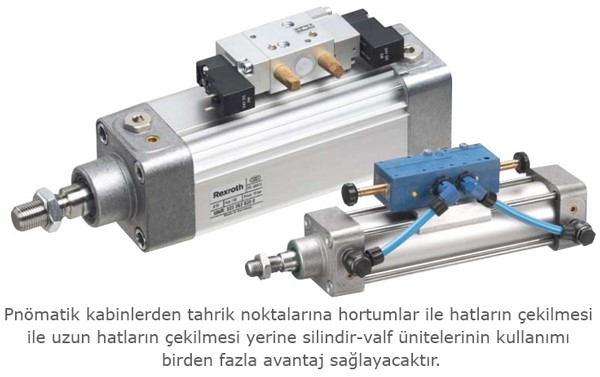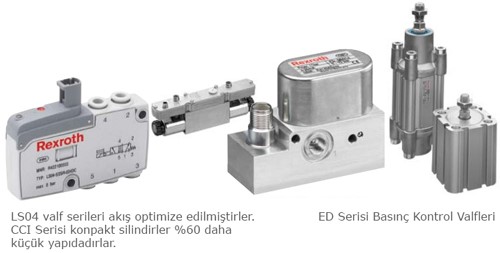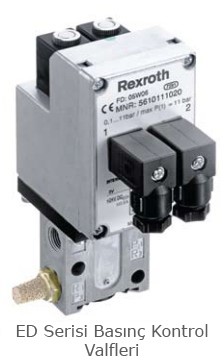Make savings with the Rexroth formula: -15, -25, -35
There are many points through which the system may lose energy when obtaining and using compressed air. An extensive study on energy saving measures can help prevent such losses as well as significantly reducing the energy consumption.
Since energy costs in pneumatics constitute more than half of the total cost, pneumatic applications that are designed considering efficiency and energy savings can pay off the initial investment costs in a short time.
Preventing leaks and optimizing pressures should be our main principle.

Three factors that should be taken into account:
- Sizing
Sizing the pneumatic components correctly is a prerequisite for the most efficient energy use. Choosing components that are bigger than necessary will increase energy consumption.
- Hose lengths
As the hose length increases, so does the volume that needs to be filled. Decentralization of units will decrease the number of hose and connection elements, and provide energy savings.
- Pressure settings
Only use the necessary amount of pressure. Optimizing pressure values is one of the smartest solutions for energy saving.
Why do we use large equipment for small tasks?
Correct structure size is one of the building blocks of energy efficiency. Although you make great effort to provide savings on energy, it will not be possible for you to reach the most efficient solution unless you use products designed to meet your needs in the most suitable way possible. Oversizing, i.e. “more than necessary” in times of indecisiveness and “bigger is better” just in case are some of the most common applications. Online tools by Bosch Rexroth make it possible to do correct sizing easily and reliably.

Compact Components
Reducing cylinder sizes will decrease the flow rate needed. You can provide energy savings of up to 15% by using more compact cylinders and valves thanks to their compact and economical machine designs.
-15%
You can provide energy savings of up to 15% by using more compact cylinders and valves.
Use the online tools offered by Bosch Rexroth! Online calculators, configurators, energy saving calculators
Why cause unnecessary problems and complexity with long hoses?
Decentralizing the air supply
Known for their bulkiness, central systems also consume too much energy because of the long lines they use. Long lines that reach pneumatic drive elements from pneumatic panels cause extra pressure drops and energy loss. Using cylinder valve units will shorten hose lengths in addition to reducing the number of connection points. With cylinder valve units, you can provide savings of up to 35%. Pressure loss can be minimized through direct connection of cylinders and vales. In addition to these, cylinder-valve units offer other advantage such as easy installation and maintenance, quicker response times and higher cycle frequency.
LS04 valves and ECS or EBS ejectors can easily be installed on the same point as pneumatic actuators.
-35%
With cylinder valve units, you can provide savings of up to 35%. Instead of using hoses to establish long lines from pneumatic cabinets to drive points, using cylinder-valve units will provide several advantages.
Why create overload with too much energy?
Save energy with smart pressure adjustment. If you use pressure less than necessary, you cannot do what you want to do; if you use pressure more than necessary, then the extra energy will be wasted. You can provide energy savings of up to 25% by using the right amount of pressure for each application. Electro pneumatic pressure regulators combine the digital control with the innovative proportional technology to provide the required precise pressure control.
Only use the necessary amount of pressure. Smart control systems continuously compare the actual value with the required value. In addition to this, cylinders can complete return strokes with lower pressure values. Thanks to electro pneumatic pressure control valves, cycles that do not require force are carried out at low pressures, while those requiring force can be carried out at the required pressure values. It is possible to provide energy savings of up to 25% by ensuring that the pressure is used efficiently.



